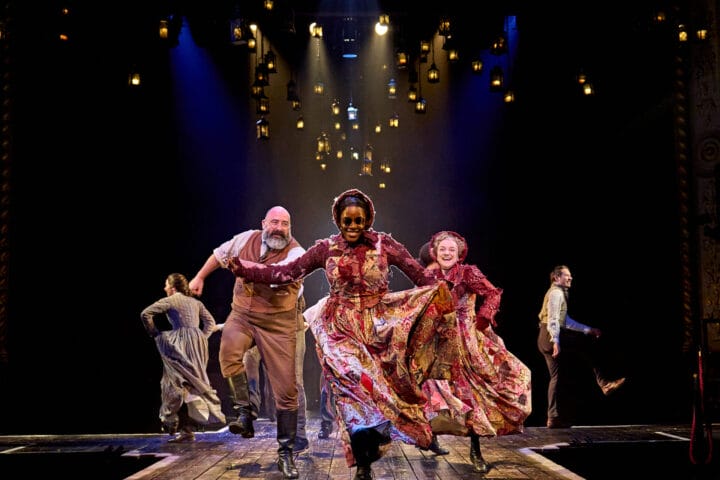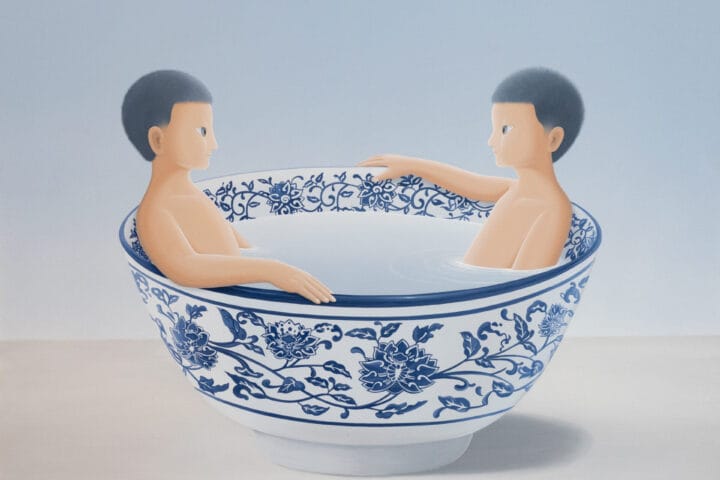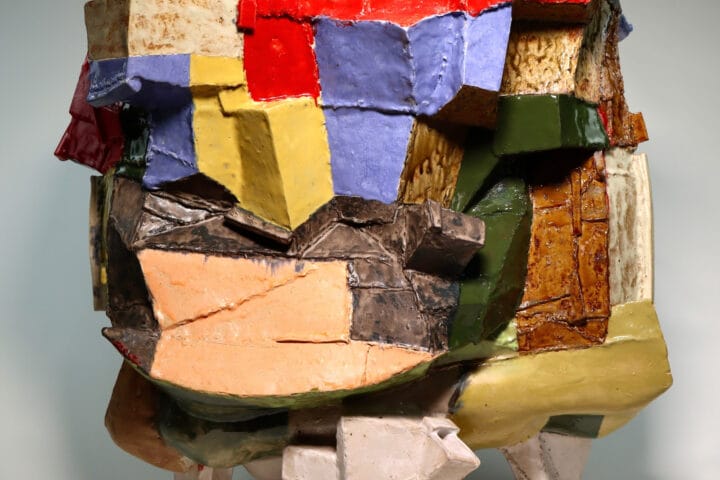Flowers Gallery is delighted to announce Miscellanalects by British painter Stuart Pearson Wright, his first solo exhibition with the gallery. The BP Portrait Award- winning artist is regarded as one of Britain’s foremost figurative painters, known for his distinctively uncanny, theatrical portraits and narrative works of himself and others.

In this exhibition, Wright explores the concept of creative “loose ends”, placing works across a range of media and subject matter in dialogue to generate potentially surprising dénouements. The title, a portmanteau of the words ‘miscellaneous’ and ‘analects’ (meaning ‘collections’, ‘crumbs’ or ‘compilation’) is expressive of the artist’s recent anthology of painting, printmaking, sculpture and performance. For Wright, the exhibition’s very heterogeneity is reflective of his own way of thinking, which he visualises as “Spiderman’s web emanating out of his hands.” After thirty years painting almost exclusively, Wright has interwoven a multivalent routine throughout his practice of sewing, carving, and sculpting.
Wright’s characteristically unsettling visual language playfully pervades in Miscellanalects, as he facilitates unexpected encounters between the work and the viewer. A painting of a man wielding a flyswatter, Dieyoulittlebastard(2023), is fixed with a motion sensor and sound, extending its subject matter beyond the picture plane into the gallery space. Bloke(2023), a three-quarters life-sized sculpture of a man smoking a cigarette is similarly activated by the approach of the viewer, again incorporating sound and plumes of vapour. As Wright reflects: “I love art that takes people by surprise.”
Wright moved from East London to castle ruins in rural Suffolk in 2014 and the area’s surrounding folklore and mythology have become a key motif in his recent work. The figure of a ghostly black dog said to roam the East Anglian coastline crops up repeatedly in the exhibition’s paintings, sculpture and performance.
The artist’s portraiture, for which he has received widespread critical acclaim, remains a central tenet of Miscellanalects, often with local Suffolk residents as their subjects. Also featured are the artist’s paintings of notable figures such as Green Party MP Caroline Lucas, Caroline (2023) as well as more personal images including Self Portrait 2020 (2020) and Mermaid I Married (2020). Presented together in close arrangements, they reflect Wright’s lauded thirty-year exploration of the human condition.

ABOUT STUART PEARSONWRIGHT
Stuart Pearson Wright (British, b.1975) is one of Britain’s leading portrait artists. While studying at the Slade School of Fine Art, London, he won a travel award from the National Portrait Gallery as part of the 1998 BP Portrait Awards. He drove around Britain in a van, producing sketches and paintings of people he met as he went, and the resulting National Portrait Gallery exhibition From Eastbourne to Edinburgh: A Painter’s Odyssey was met with widespread critical acclaim. Wright went on to win first prize in the 2001 BP Portrait awards for his portrait The Six Presidents of the Royal Academy. The National Portrait Gallery have subsequently acquired thirty-one works by Wright, including his notable portraits of public figures John Hurt, Adam Cooper and Mike Leigh. Important solo exhibitions include HALFBOY (2018), Heong Gallery, Cambridge; Most People Are Other People (2006), National Portrait Gallery and National Theatre, London and From Eastbourne to Edinburgh (2001), National Portrait Gallery; London. Notable group exhibitions include Seven Portraits: Surviving the Holocaust (2022), The Queen’s Gallery, Buckingham Palace and Palace of Holyrood House, Edinburgh; Self (2015), Turner Contemporary, Margate; Marcel Duchamp in South East Asia (2012), Equator Art Projects, Singapore; and The First Actresses (2011), National Portrait Gallery, London. His work is in numerous public collections nationally and worldwide, including the British Museum, the National Portrait Gallery, The Royal Academy of Arts and the Government Art Collection, London, the Ashmolean Museum, Oxford, the Rhode Island School of Design Museum, Rhode Island, and Vemmetofte Kloster, Copenhagen.











